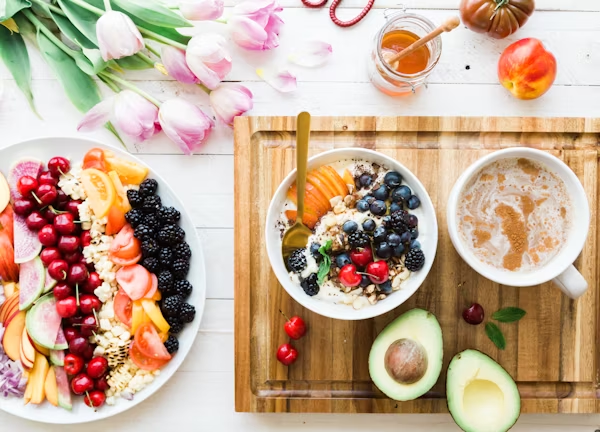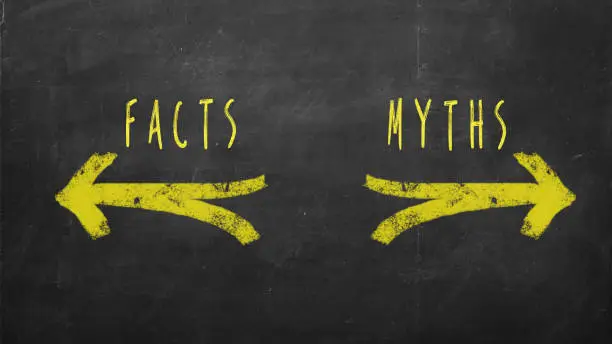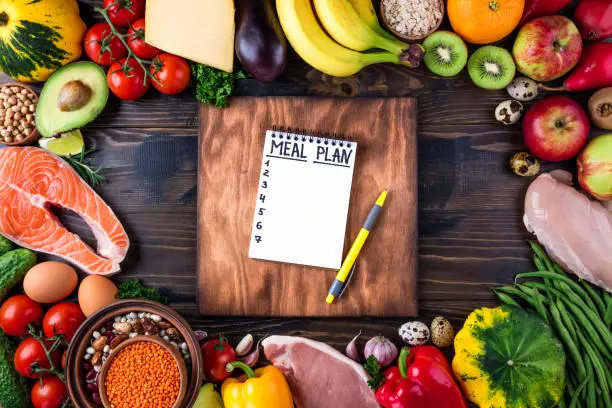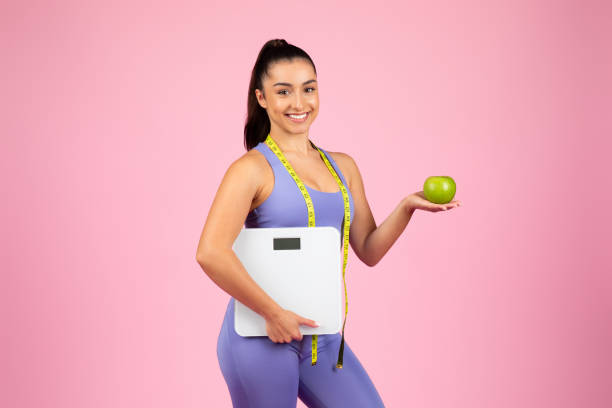🌟 Introduction
In the world of health and fitness, few debates stir up as much chatter as Clean Eating vs. Flexible Dieting.
Some swear by clean eating — filling their plates with unprocessed, whole foods and cutting out anything artificial. Others argue that “If It Fits Your Macros” (IIFYM) is the way to go — enjoying pizza and still hitting goals.
So, who’s right? What’s better for weight loss, long-term health, and overall sanity?
Let’s break down the facts, myths, pros, and cons of both approaches — and help you decide what works best for you.
🥗 What is Clean Eating?
Definition and Core Principles
Clean eating focuses on consuming whole, minimally processed foods. It’s not a specific diet plan but rather a nutritional philosophy.
At its core, clean eating emphasizes:
- Whole grains
- Fresh fruits and vegetables
- Lean proteins
- Healthy fats
- Minimal added sugars and preservatives
Examples of Clean Foods
- Brown rice instead of white bread
- Grilled chicken over processed deli meats
- Fresh fruit vs. canned in syrup
- Nuts and seeds as snacks instead of chips
It’s about eating closer to nature and avoiding foods with a long ingredient list you can’t pronounce.
✅ Benefits of Clean Eating
Nutrient Density & Energy Levels
Clean foods are packed with vitamins, minerals, and fiber. They give your body what it needs to:
- Boost energy
- Improve skin health
- Support immune function
Gut Health and Reduced Inflammation
Many processed foods are linked to gut issues and inflammation. Clean eating can help:
- Improve digestion
- Decrease bloating
- Reduce joint pain and brain fog
⚠️ Downsides of Clean Eating
Restriction and Food Anxiety
When people go too “clean,” they might start to fear or demonize certain foods, leading to:
- Orthorexia (an obsession with eating “pure”)
- Social anxiety around food
- A black-and-white view of eating
Sustainability and Social Pressures
Let’s face it — life isn’t always clean. Dinner with friends, travel, holidays — clean eating can feel restrictive, making it hard to stick with long term.
🍕 What is Flexible Dieting (IIFYM)?
Definition and Core Concept
Flexible dieting is based on tracking macronutrients — protein, carbs, and fat — instead of labeling foods as “good” or “bad.”
If a food fits within your daily macro targets, it’s fair game — yes, even donuts.
Macronutrients Explained
- Protein: Builds muscle (e.g., chicken, fish, tofu)
- Carbs: Provide energy (e.g., rice, fruit, pasta)
- Fats: Support hormones (e.g., nuts, oils, avocado)
IIFYM = Calories and macros over food purity.
🎯 Benefits of Flexible Dieting
Food Freedom and Mental Flexibility
You can enjoy “fun” foods in moderation without guilt. This leads to:
- Better adherence
- Less binge-eating
- More relaxed mindset around food
Adaptability to Lifestyle
Whether you’re eating out, traveling, or hitting a busy workday, flexible dieting fits in. You learn portion control and self-trust, not restriction.
🔻 Drawbacks of Flexible Dieting
Overreliance on Processed Foods
Just because it fits your macros doesn’t mean it’s nutritionally ideal. Some fall into the trap of:
- Eating mostly junk
- Missing out on fiber and micronutrients
- Feeling sluggish despite “perfect macros”
Lack of Nutritional Awareness
Focusing only on numbers can make you overlook food quality. You might hit your goals but feel nutritionally imbalanced.
📊 Nutritional Comparison: Quality vs Quantity
Micronutrients vs Macronutrients
- Clean eating shines with vitamins and minerals
- Flexible dieting ensures caloric control and balance
The sweet spot? Tracking while choosing nutrient-dense foods.
How Each Diet Affects Health in the Long Term
- Clean eating promotes longevity and disease prevention
- Flexible dieting promotes sustainability and weight control
Combine both for the best of both worlds.
🧠 Psychological Impact
Food Guilt, Labeling, and Mental Health
Clean eating can unintentionally lead to:
- Guilt when eating “unclean”
- Anxiety around unplanned meals
- Social isolation
Flexible dieting removes food labels, which can be mentally liberating.
Eating Disorders and Diet Obsession
However, both diets can go too far. Obsessive tracking or rigid rules can trigger disordered eating if not approached mindfully.
🌍 Sustainability and Lifestyle Fit
Which One Can You Stick With?
The best diet is the one you can do for years, not just 30 days.
- If you enjoy structure and cooking — clean eating may suit you
- If you love variety and flexibility — IIFYM might be better
Eating for Life, Not Just a Phase
Your eating style should match your:
- Personality
- Schedule
- Social life
- Values
And most importantly — it should support your mental and physical health.
🧪 Real-Life Examples and Success Stories
People Who Thrive on Clean Eating
Athletes, yogis, and those with health conditions often swear by clean eating. They feel:
- Energized
- Clear-minded
- Empowered by structure
Flexible Dieters Who Found Balance
Busy parents, professionals, and fitness competitors often prefer IIFYM. They enjoy:
- Eating without fear
- Sticking to goals long-term
- Freedom to enjoy life
🔄 Can You Combine Both Approaches?
The Hybrid Strategy
Absolutely! You can eat mostly clean while still enjoying flexibility.
- 80/20 rule: 80% whole foods, 20% flexibility
- Track macros while prioritizing micronutrients
- Skip guilt while respecting your body’s needs
Creating a Balanced Relationship with Food
Forget perfection. Aim for progress and peace of mind.
🧑🏫 Who Should Try Clean Eating?
Ideal Personality and Goals
- You enjoy cooking at home
- You want to reduce inflammation
- You prefer strict structure
Best Practices and Tips
- Don’t obsess over “perfection”
- Allow occasional treats
- Focus on how food makes you feel
👨💻 Who Should Try Flexible Dieting?
Personality Types That Benefit
- You like tracking and data
- You have varied social situations
- You dislike strict food rules
How to Start With IIFYM
- Calculate your macros (use online calculators)
- Use apps like MyFitnessPal or Cronometer
- Track consistently, aim for balance
✅ Conclusion
So, Clean Eating or Flexible Dieting — what’s better?
The real answer is: it depends on you.
- Want nutrient density and structure? Try clean eating.
- Want freedom and balance? Flexible dieting might be your jam.
Or better yet: take the best of both worlds. Eat mostly whole foods, but don’t fear a slice of cake now and then.
Your diet should serve your life — not control it.
❓ FAQs
1. Can I lose weight with clean eating or flexible dieting?
Yes! Both can lead to weight loss if you’re in a calorie deficit. The method you stick to matters more than the method itself.
2. Is it bad to eat “unclean” food sometimes?
Not at all. One “unclean” meal won’t ruin progress. Balance beats perfection.
3. Can I do clean eating and flexible dieting together?
Yes. You can track macros while focusing on whole foods — the ultimate combo.
4. Does flexible dieting work for people with health conditions?
It can, but talk to a registered dietitian to make sure it fits your medical needs.
5. Which is easier for beginners?
Flexible dieting is often easier socially. Clean eating is more intuitive for those who like routine.



